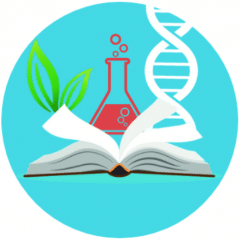This brief compares teen mental-health treatment options across Phoenix, Scottsdale, Tucson, and smaller Arizona communities. Using a structured framework (levels of care, clinical approaches, access and capacity, family involvement, coordination with schools, and aftercare), it outlines where Phoenix tends to provide broader, more intensive services and where other cities may provide niche or community-integrated advantages.
Finding the right support for teens facing emotional, behavioral, or mental health challenges often depends on location. Arizona provides a wide range of treatment options, but Phoenix stands out for its variety of resources, structured programs, and access to specialized care compared to other cities in the state. Families often weigh whether a program for troubled youth in Phoenix provides more advantages than options in Scottsdale, Tucson, or smaller communities. When comparing locations, consider factors such as travel distance, insurance coverage, school coordination, waitlists, and the availability of strong aftercare to support continued progress at home.

Research Question
How do teen treatment programs in Phoenix differ from those in Scottsdale, Tucson, and smaller Arizona cities across (1) level of care, (2) therapeutic models, (3) access and capacity, (4) family integration, (5) school coordination, and (6) aftercare?
Scope & Method (Approach)
- Comparative lens: City-level program characteristics rather than individual facilities.
- Evaluation dimensions:
- Level of care (IOP, PHP, residential)
- Therapeutic models (CBT/DBT, trauma-informed, co-occurring care)
- Access & capacity (program variety, wait times, insurance acceptance)
- Family integration (frequency/structure of family sessions)
- School coordination (on-site or linked academics, counselor collaboration)
- Aftercare (step-down plans, relapse-prevention, community supports)
Note: This is a framework comparison meant to guide family decisions; availability varies by insurer, diagnosis, and date.
Key Takeaways
Phoenix provides the widest range of levels of care and specialty tracks, which can shorten pathways into the right-fit intensity (especially for higher-acuity needs).
Scottsdale often features boutique/smaller-cohort models with strong family participation and individualized plans.
Tucson frequently integrates community and school resources, with solid outpatient and PHP options and bridges between settings.
Smaller communities may provide tight-knit, personalized support, but families often travel for higher-acuity residential or specialty services.
Best outcomes come from matching intensity to need, not from location alone.
Comparative Findings
1) Level of Care & Intensity
Phoenix: Broad continuum (IOP, PHP, multiple residential options with 24/7 supervision). Advantage for teens needing structured, round-the-clock care or quick step-ups/step-downs.
Scottsdale/Tucson: Reliable outpatient/PHP; fewer residential beds than Phoenix. Good for teens who are stable enough to benefit from community-based routines.
Smaller communities: Outpatient counseling and limited IOP; residential often requires referral to larger cities.
2) Therapeutic Models & Specialization
Phoenix: Wider menu of evidence-based modalities (CBT, DBT, trauma-informed approaches, co-occurring care; some experiential options like equine/yoga). Larger centers may provide specialty tracks (e.g., anxiety, mood disorders, substance use)
Scottsdale: Emphasis on small groups, family-systems work, and tailored plans; some programs lean toward holistic or experiential.
Tucson: Blends clinical work with community partnerships (youth programs, vocational/academic supports).
Smaller communities: Strong individual therapy; specialty tracks less common.
3) Access, Capacity & Practical Barriers
- Programs → greater capacity and typically shorter waits for certain levels of care; broader insurance coverage and payment pathways.
- Scottsdale/Tucson: Fewer total slots but may provide faster starts in specific tracks; personalized triage.
Smaller communities: Access can hinge on a few providers; families may face waitlists or travel for higher intensity.
4) Family Involvement
Phoenix: Standardized family therapy curricula, workshops, and weekend programming in many residential/PHP settings.
Scottsdale: Often high-touch family engagement with smaller caseloads and tailored homework/communication plans.
Tucson/Smaller communities: Consistent participation possible; depth depends on provider resources and caseload.
5) School Coordination & Academics
- Phoenix: More programs with on-site academic support or dedicated school liaisons; easier to maintain credits during treatment.
- Tucson: Strong tradition of school-linked supports, making it practical for PHP/IOP while staying enrolled.
Scottsdale/Smaller communities: Collaboration varies; families may need to advocate for 504/IEP or flex schedules.
6) Aftercare & Continuity
Phoenix: Larger networks ease step-down (residential → PHP → IOP → outpatient); more peer groups and relapse-prevention groups.
Scottsdale/Tucson: Effective aftercare via community clinicians and school supports; sometimes lighter group options than Phoenix.
Smaller communities: Strong one-to-one follow-up; group variety may be limited, requiring telehealth supplements.
Practical Decision Guide (Match Needs to Setting)
- Higher acuity / safety concerns / complex co-occurring needs: Start with Phoenix for residential or robust PHP.
- Moderate symptoms with strong family support: Scottsdale small-cohort or Tucson community-integrated programs can fit.
- Preference to stay local with stable symptoms:Smaller communities plus telehealth groups; plan for escalation path if needed.
Limitations
- Programs are changing (new tracks, staffing, insurance panels).
- Wait times and access differ by season and insurer.
- Individual outcomes depend on fit, engagement, and aftercare, not location alone.
Conclusion
Phoenix generally provides the widest continuum and capacity, which benefits teens who need structured, intensive care or smooth transitions between levels. Scottsdale and Tucson can excel for families seeking smaller groups, strong family systems work, or community-linked supports, while smaller communities provide personalized local care augmented by referrals or telehealth. The best choice is the program that matches the teen’s clinical needs and home context, pairs treatment with family and school coordination, and guarantees a clear aftercare pathway.



